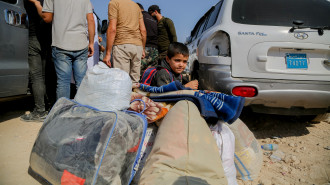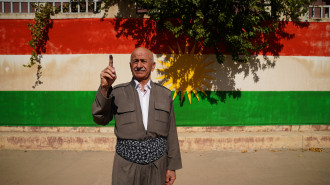Syria in maps: How eight years of revolution changed the country
Throughout the early years of the war, Assad was on the ropes as his military struggled to cope with mass defections from the army and an insurgency from the Free Syrian Army and other rebel groups.
Thousands of Iranian-backed militia fighters and Hizballah have entered Syria and saved the regime from collapse. When Russia's air force entered the war in September 2015, Assad's regime was almost guaranteed survival.
The fragmentation of the opposition - with hardline Islamist elements emerging - have also served to hinder the revolution.
Today, the opposition remain cornered in northwest Syria, while around half the population are refugees - inside and outside the country - due to the regime's devastating assaults.
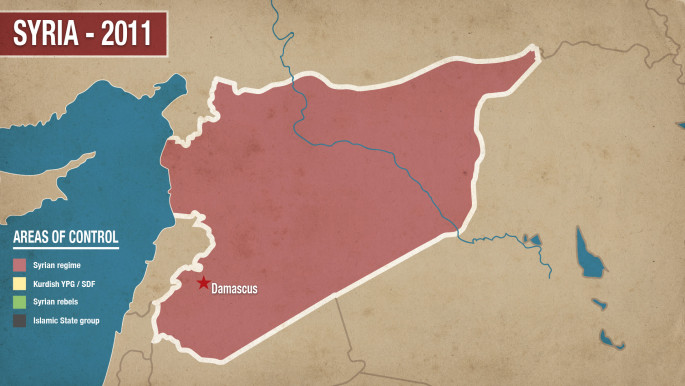 |
March 2011
Hundreds of protesters take to the streets of Damascus and Aleppo, following calls for a "Day of Rage" by activists on social media.
Protesters demanded reforms, following decades of Baathist rule, where corruption had become endemic and the security state pervasive. The numbers who took to the streets were relatively low, on 15 January 2011, compared to in other Arab countries, but activists say this is due to fears of the regime.
Bashar al-Assad became president in 2000, following the death of his father Hafez, who positioned himself into power following the "Corrective Movement" in 1970.
Resistance to the regime grew during the 1970s, with an Islamist insurgency targeting military and government figures. This led to the murder of Alawite army cadets at a Aleppo barracks in 1979, sparking a wider insurgency culminating in the 1982 Hama Massacre, which left thousands of civilians dead.
Barring struggles within government and the Assad clan, Syria never recovered from the fear of the massacre and knowledge of the country's horrific jails, where torture and murder were routine. Uprisings elsewhere in the Arab world, which led to the downfall of dictators in Egypt and Tunisia, tested that fear.
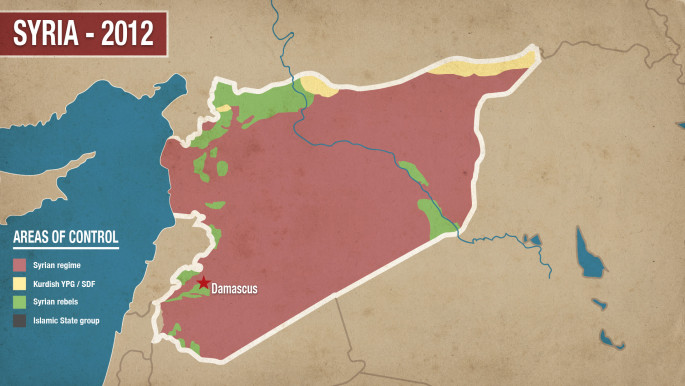 |
March 2011 - March 2012
Protests against the regime escalated, particularly the torture and murder of 13-year-old Hamza al-Khatib in Daraa, southern Syria, which became known as "the Cradle of the Revolution". Demonstrations and acts of civil disobedience swept through other cities in Syria, including Hama.
The regime attempted to crush the protests with military force, killing thousands and leading to defections in the military. This started an insurgency with the Free Syrian Army formed, becoming the main armed resistance to the regime. Assad's forces began to bombard cities such as Hama, intensifying the armed conflict.
Efforts by the Arab League to mediate an end to the crisis fail with Syria suspended from the body due to the regime's failure to abide by the terms of a peace plan. The UN took over the mission in trying to end the violence, but became frustrated by the regime's aversion to negotiations and reforms.
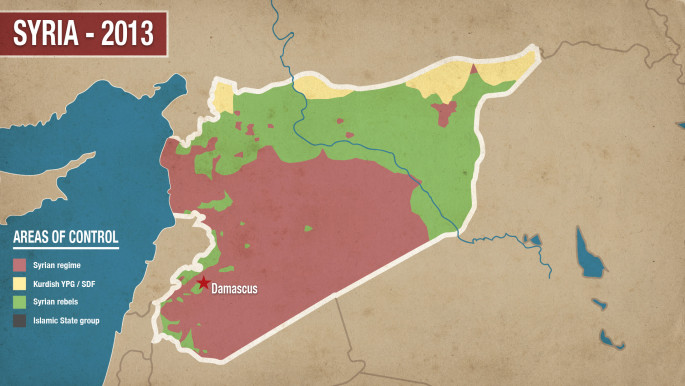 |
March 2012 - March 2013
An explosion hits a meeting of top regime officials at the National Security headquarters in Damascus. The bomb kills at least four leading figures, including Defence Minister General Dawoud Rajiha and General Assef Shawkat, the deputy defence minister, and Bashar al-Assad's brother-in-law. Assad's brother, Maher, reportedly loses a leg in the explosion, with the FSA claiming responsibility.
The Battle of Damascus sees the rebels take over several districts in the capital, before a regime offensive pushes them out to the suburbs by August 2012.
UN-sponsored peace efforts fail to gain traction as the conflict worsens. Syrian regime militias are blamed for the Houla Massacre, when at least 108 civilians, including 49 children are brutally murdered. The US and European countries expel Syrian ambassadors and diplomats in protest.
Assad's military step up their attacks on opposition areas using the air force, including the first use of barrel bombs - notorious improvised instruments of death which kill thousands during the war. Meanwhile, the first reports of Iranian troops being used to bolster the regime - depleted by defections and draft dodging - emerge. Kurdish militias take over some areas of northern Syria, after the regime evacuates the territories due to shortages of manpower.
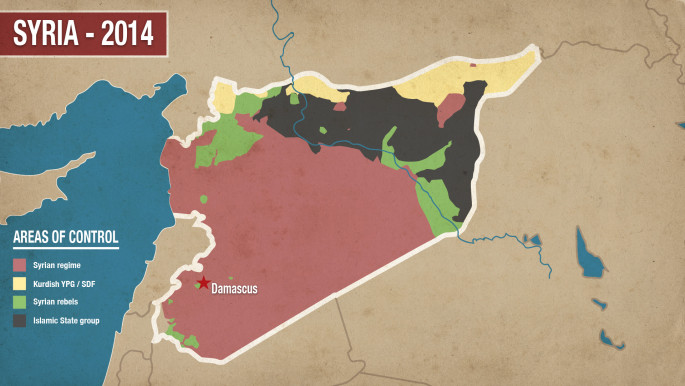 |
March 2013 - March 2014
Hizballah help in the defeat of a rebel force at al-Qusayr, close to the Lebanese border, securing a vital transit route for the regime. Iran and Hizballah's involvement in the war intensified following this victory, making up a critical component in regime military operations.
The opposition Damascus suburb of Eastern Ghouta is attacked with sarin - a deadly nerve gas - killing hundreds of civilians. The US appears poised to initiate punitive military against the regime following the massacre, but step back after Damascus agrees to hand over its chemical arsenal.
Infighting among rebel groups, sees a hardline faction emerge from among al-Qaeda linked insurgency in eastern Syria, with the moderate opposition and anti-Assad Islamist groups beginning a campaign against the so-called Islamic State group (IS).
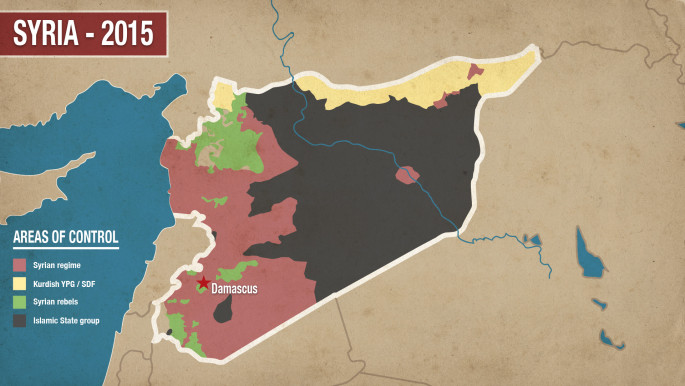 |
March 2014 - March 2015
IS take over large parts of eastern Syria from the rebels, including Raqqa, following the group's ascendency in Iraq, giving it control of territories in two countries. IS militants kill rebel fighters and activists, religious minorities, and other opponents in eastern Syria, including the massacre of hundreds of members of the Sunni al-Shaitat tribe in August 2014.
Rebels vacate large parts of Homs, the "heart" of the Syrian Revolution paving the way for future evacuation deals from opposition cities.
US air strikes aid Kurdish forces as they fought off an IS offensive on Kobani, turning the tide against the jihadi militants and forcing them to end their siege on the northern Syrian town in January 2015.
Jordanian pilot, Moaz al-Kassasbeh, in murdered by his IS captors with the horrific video released by the jihadi group, sparking revulsion in Jordan and elsewhere.
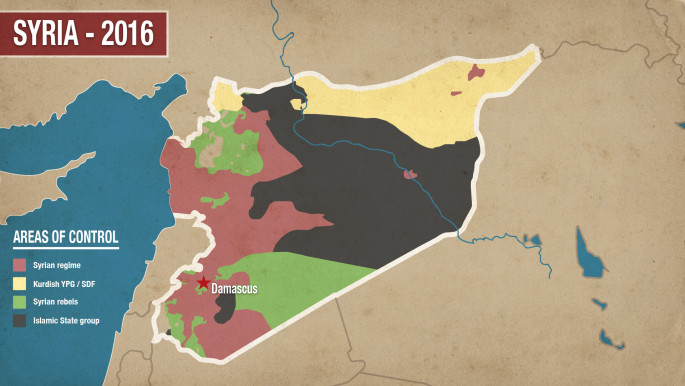 |
March 2015 - March 2016
IS capture the ancient city of Palmyra in May from the Syrian regime. The group massacre a number of civilians including antiquarian, Khaled al-Asaad, who worked at the ancient site.
Idlib City is captured by a rebel force in March, with the a victory in Jisr al-Shighour making Idlib the first Syrian province to come entirely under opposition control. Idlib remains a stronghold of the opposition up to the present day.
Russia enters the war in September 2015, providing Assad with a major boost just as his military appears close to collapse. A Russian plane is shot down by Turkey in November, rupturing ties between the two countries.
In December, the last rebel areas of Homs are evacuated, giving the regime full control of Syria's third-largest city.
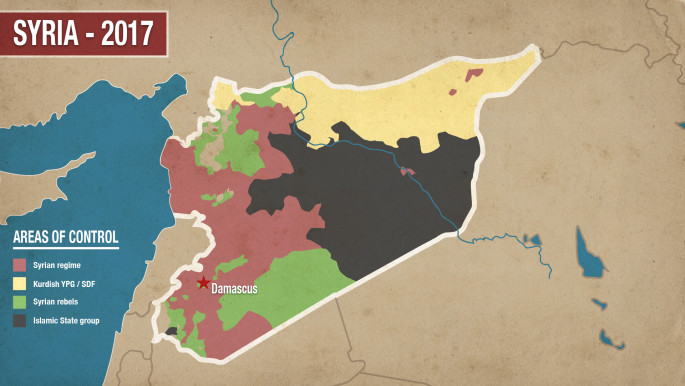 |
March 2016 - March 2017
A Syrian regime offensive results in the recapture of Palmyra in March 2016, only to be driven back again following an IS counter-offensive in December.
Turkey and Syrian rebels began an assault in northern Syria against IS and Kurdish forces as part of Operation Euphrates Shield, which is later extended into Afrin.
Regime forces - heavily-backed by Iranian militias and the Russian air force - launched an offensive on opposition-held eastern Aleppo. Rebels are overwhelmed by the huge firepower unleashed on the Aleppo neighbourhoods and the opposition is defeated in December 2016. The offensive and high civilian death toll was described by the UN as "a complete meltdown of humanity".
Turkey, Iran and Russia in January began the so-called Astana peace talks, which overshadow the UN negotiations which are largely seen as paralysed.
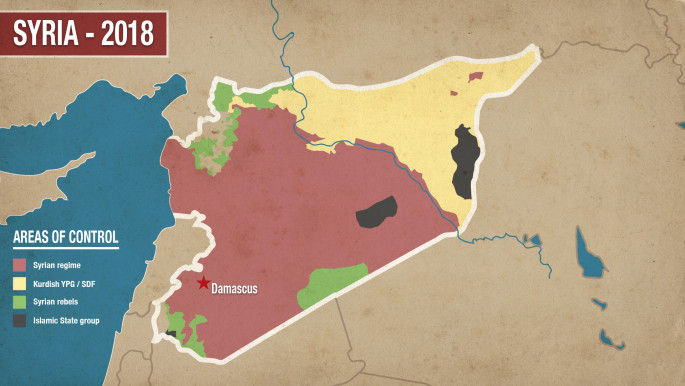 |
March 2017 - March 2018
In April, the Idlib village of Khan Sheikhoun is hit with sarin gas, leading to around 100 civilian deaths. US President Donald Trump ordered cruise missile strikes on regime positions in retaliation.
The US increases its military support for the Kurdish-dominated Syrian Democratic Forces (SDF), which becomes the main force against IS. The group captures IS' self-declared "capital" Raqqa in October with the group losing its main urban centres.
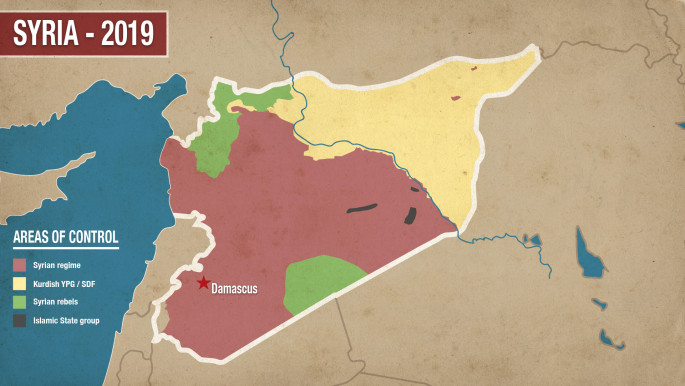 |
March 2018 - March 2019
A regime offensive on the opposition suburbs of Ghouta sees rebels evacuated to northern Syria following another evacuation deal. A gas attack on Eastern Ghouta ends with US, UK and French airstrikes on regime positions.
In June and July, the regime launches a new offensive on southern Syria, resulting in the opposition handing over their last territories outside northwest Syria.
In December, President Trump announces that US troops will be withdrawn from Syria, while IS remain cornered in a tiny pocket of territory along the Euphrates River.
Hardline rebel group Hayat Tahrir al-Sham (HTS) capture Idlib province, forcing out moderate rebel groups into Turkish-controlled Aleppo.

![Palestinians mourned the victims of an Israeli strike on Deir al-Balah [Getty]](/sites/default/files/styles/image_684x385/public/2024-11/GettyImages-2182362043.jpg?h=199d8c1f&itok=xSHZFbmc)


![The law could be enforced against teachers without prior notice [Getty]](/sites/default/files/styles/image_684x385/public/2178740715.jpeg?h=a5f2f23a&itok=hnqrCS4x)
 Follow the Middle East's top stories in English at The New Arab on Google News
Follow the Middle East's top stories in English at The New Arab on Google News

